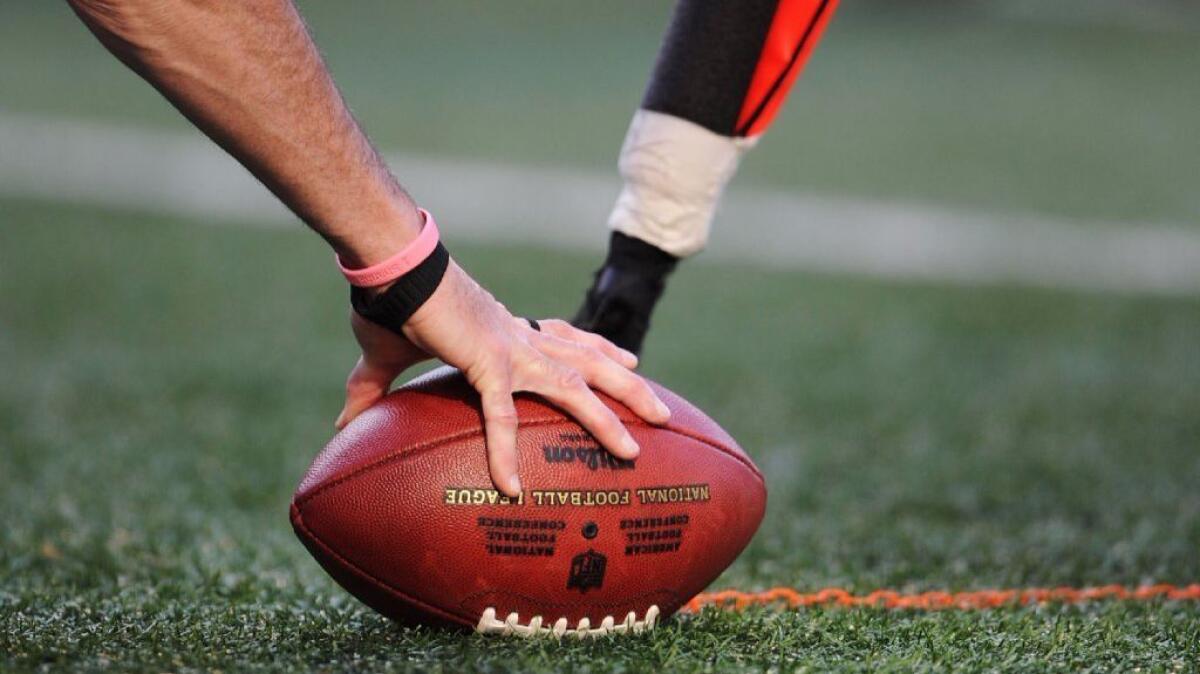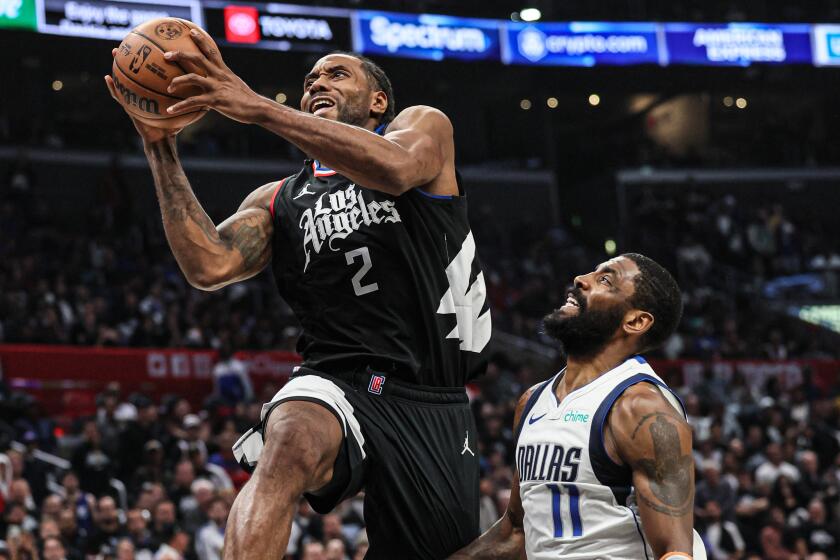Ask Sam Farmer: Why does the NFL use just one set of first-down chains when they have two on the field?

The first-down chains are brought out to measure for a first down during a game between the Chiefs and the Jets on oct. 26, 2008.
Have a question about the NFL? Ask Times NFL writer Sam Farmer, and he will answer as many as he can online and in the Sunday editions of the newspaper throughout the season. Email questions to: sam.farmer@latimes.com
During the Rams-Seahawks game, there was a questionable placement by the line judge that was challenged by Seattle Coach Pete Carroll. Both ball placement and line judge were on the opposite side of the official first-down chains. As a result, they had to carry the chain across the field for a measurement. Why aren’t there two sets of first-down chains on the field? The games are long enough as it is.
Jim Singh, La Mesa, Calif.
Farmer: For readers who don’t know, there are seven people on a chain crew. Four work on the same side of the field as the head linesman, who oversees them, then they all switch to the other side after halftime. There’s a three-person auxiliary crew on the other sideline, but the official measurements are never made by that trio. The main reason that the official measurement is kept on only one side of the field is it would be too difficult to consistently synchronize both sides.
::
Many years ago, I had surgery for a left inguinal hernia, I know what that is. What is a “sports” hernia?
Ken Kell, Orange
Farmer: Dr. Neal ElAttrache, Rams team physician, explains the difference: “A typical hernia is a weakness in the lower abdominal fascia, which is a firm sheet of fibrous tissue at the bottom of the abdominal muscles. That allows the intestines to bulge through, or sometimes enter the narrow canals leading out of the abdomen. A sports hernia is an injury, microtears in the interwoven fascia that connects the abdominal muscles to the pelvis, but also blends with the fascia that connects the groin muscles to the pelvis.”
Got all that?
In short, ElAttrache said, a sports hernia “doesn’t let intestines or abdominal contents go through it, but leads to pain if the patient tenses his abdominal muscles, or forcefully rotates his torso.”
Follow Sam Farmer on Twitter @LATimesfarmer
More to Read
Get our high school sports newsletter
Prep Rally is devoted to the SoCal high school sports experience, bringing you scores, stories and a behind-the-scenes look at what makes prep sports so popular.
You may occasionally receive promotional content from the Los Angeles Times.







